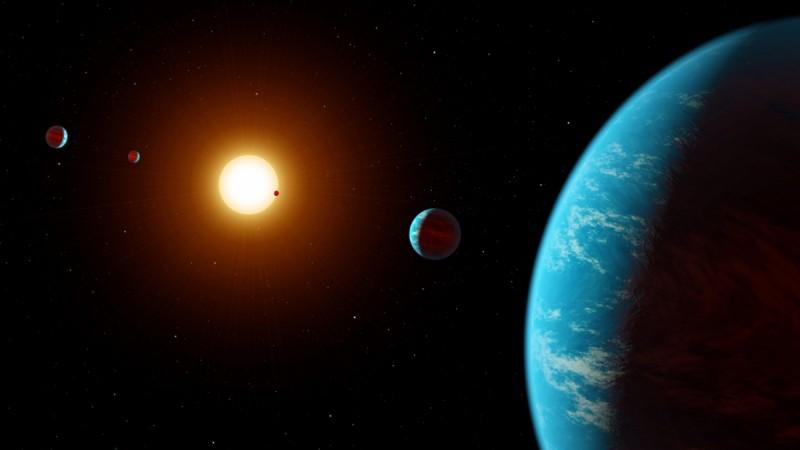
It is the rise of greenery and plants that paved the way for the planet to support a vibrant mix of life forms from humans to dinosaurs and everything in between. Looking for this same process in alien worlds, especially in old planets could be one way to look for life and maybe even a new home outside the Solar System.
According to a new study, Earth's vegetative history could open clues to how to search for habitable exoplanets. In a new paper, scientists define the "vegetation red edge" which means the Earth is just really good at reflecting a good amount of near-infrared light.
"We use Earth's history as a key for finding life in the universe," said research co-author Lisa Kaltenegger, of Cornell University, said in a statement. "Looking at how life altered Earth's biosignatures over time help us to figure out which planets are most likely to show the strongest signs of life, ultimately giving us the best chances of successfully pinpointing life, if it is there."
Over the last 500 million years, notes the Cornell report, the Earth's surface and geology have changed drastically. It has gone from being completely covered in ice to sprawling forests spread out over the land. However, for most of Earth's early history, the landmass was not dominated by plants, but once they started to take root, they completely covered most of the planet. Moss were the first land plants, but they show a weak vegetation signature when compared to modern trees, so it might be difficult to look for, by astronomers.
"Our models show that Earth's vegetation reflectance signature increases with coverage of our planet's surface, but also with the age of our planet," said co-author Jack O'Malley-James, of Cornell's Carl Sagan Institute.

Exoplanets—planets of different stars—could be parched and arid, they could have clear skies and have endless cacti forests, or even be hot jungle worlds covered in tropical rainforests, explains Kaltenegger. Over interstellar distances, she says, planets like these might be the best targets to spot vegetation.
Back in 1989, NASA had launched the Galileo toward Jupiter and Carl Sagan requested the space agency to turn the spacecraft to see Earth, specifically to understand how light reflected off the planet because Earth is the only place known to support life. The observations were made, according to the report in December 1990 and it revealed a distinctive boost in reflectance between the red and infrared spectrum—near-infrared— this wavelength of light is just beyond the limits of human vision and it is caused by vegetation.
"The signal Galileo detected for Earth was similar to what observations of an exoplanet in another star system might look like, but, of course, Galileo was much closer to us," said O'Malley-James.
Observing an exoplanet is more challenging and is a far way off, but telescope technology, he pointed out, is getting better at spotting even tiny signals. Also, factoring in Earth's changing landscapes into current models, it will be easier to detect vegetation in other worlds, in the near future, he explained.
The paper titled, "The Vegetation Red Edge Biosignature Through Time on Earth and Exoplanets," was first published in the Astrobiology Journal.
















